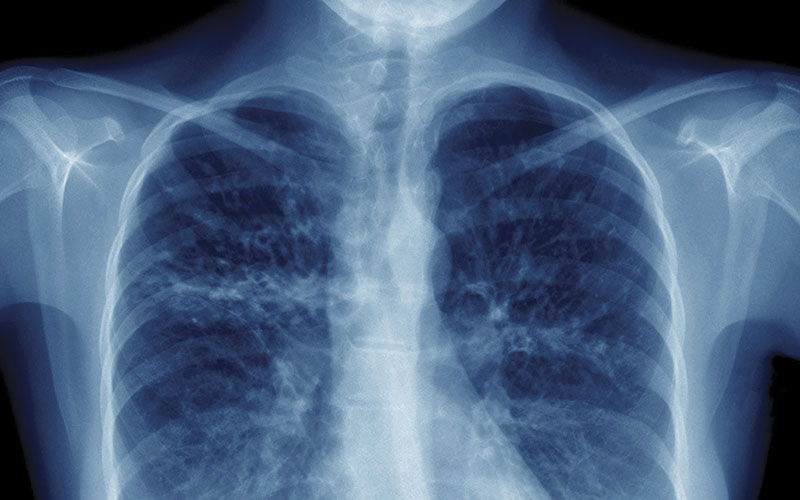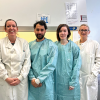Issue 2 of our journal is now completed. By the time you read this, the hardcopy may already have landed on your doormats, and those of you who have been to the website will already have accessed and read some of the papers. Editor Andrew Blann outlines the content in the latest issue.

S Long et al. Sperm toxicity testing:
UK best practice guideline from the Association of Biomedical Andrologists.
Half of fertility issues could reside in the male, calling for the need for accurate sperm assessment. Last year we published a guideline on uncertainty in sperm measurement – this year we extend this in a guideline on identifying laboratory procedures likely to be toxic to sperm.
B Pourakbari et al. High frequency of metronidazole and clarithromycin-resistant Helicobacter pylori in formalin-fixed, paraffin-embedded gastric biopsies.
It is easy to isolate and examine micro-organisms from sputum and wounds, but the advance made by colleagues in Iran is to extract then analyse DNA from H pylori in gastric biopsies. They found the high frequency of resistance to clarithromycin was linked to certain genes.
J Zhao et al. Serum CA125 in combination with ferritin improves diagnostic accuracy for epithelial ovarian cancer.
Cancer antigen 125 (CA125) is one of the leading markers for this particularly lethal malignancy. This paper from China shows that, in some cases, ferritin provides better sensitivity and specificity, but both markers together provide superior diagnostic accuracy, and so possible use in a routine setting.
Lv Y et al. Serum S100 calcium binding protein A4 (S100A4) as a diagnostic and prognostic biomarker in epithelial ovarian cancer.
In our second paper on ovarian cancer, another Chinese group show that this molecule is not only higher in this cancer, but is linked to clinical indices such as stage, and that levels are linked to disease free survival and overall survival. Of further importance is that it out-performs the established marker CA125.
N Mousa et al. Can combined neutrophil to lymphocyte ratio and C-reactive protein be used for diagnosis of spontaneous bacterial peritonitis?
Many of us will be aware of the dangers of septicaemia, which may be a consequence of peritonitis, and of the leading inflammatory marker, CRP. The advance made by this report is that the diagnostic accuracy for peritonitis can be improved by combining it with the ratio of neutrophils to lymphocytes.
S Mashayekhi et al. Effects of miR-27A, miR-196a2 and miR-146a polymorphisms on the risk of breast cancer.
Reflecting their novelty and potential importance, the Journal has published several articles on these microRNAs. The contribution of the present study is that it links different types of miRNAs with breast cancer, and so, like the gold standard BRCA-1, may one day become part of a routine screening panel.
Amr KS et al. Potential value of circulating microRNA-126 and microRNA-210 as biomarkers for
type 2 diabetes with coronary artery disease.
miRNAs have roles in numerous diseases, as illustrated by this paper from Egypt, which shows a reciprocal relationship between these two miRNAs, and that levels discriminate “simple” diabetes from those diabetics with frank atherosclerosis. This is further evidence that miRNAs may one day enter the routine service.
S Mashayekhi et al. Functional variants of p21 gene alter susceptibility to meningioma.
As the cell passes through mitosis, it must pass several checkpoints to assure all is well. One such checkpoint is part-controlled by a protein called p21, mutations in which can lead to tumourigenesis. This “In Brief” reports that a certain polymorphism is linked to meningioma, and so may possibly have a role in the development of the disease. This is a further example of how molecular genetics have an increasingly important role in medical laboratory science.
Moore JE et al. Examination of 16S-23S rRNA intergenic spacer region (ISR) heterogenetity in a population of clinical Streptococcus pneumoniae – a new laboratory epidemiological genotyping tool to aid outbreak analysis.
More evidence of the value of molecular genetics in this short report, showing variation in ribosomal RNA can help detect and address organism outbreaks. It remains to be seen if the same technology can be applied to other microbes.
Liu et al. Prognostic value of serum levels of soluble MICA (sMICA) in patients with prostate cancer.
In this issue we have already noted the value of a new serum marker in an important female cancer – the present report demonstrates the importance of a new serum marker in the leading male cancer. The crucial aspect of this paper is that sMICA out-performs the leading prostate cancer marker – PSA – and so is a candidate for the routine work-up of men with, or suspected of having, this disease.
Caskey S et al. Belfast agar – a simple laboratory medium to separate Pseudomonas aeruginosa from pan-resistant Burkholderia cenocepacia isolated from the sputum of patients with cystic fibrosis (CF).
One of the problems faced by those with cystic fibrosis is an increased frequency of lung infections, and so the laboratory is called upon to isolate the causative organism, often a gram-negative pseuomonad. Caskey et al advance the science of this disease by describing a novel and simple method to separate two phenotypically close species with ease and in a cost-effective manner.




